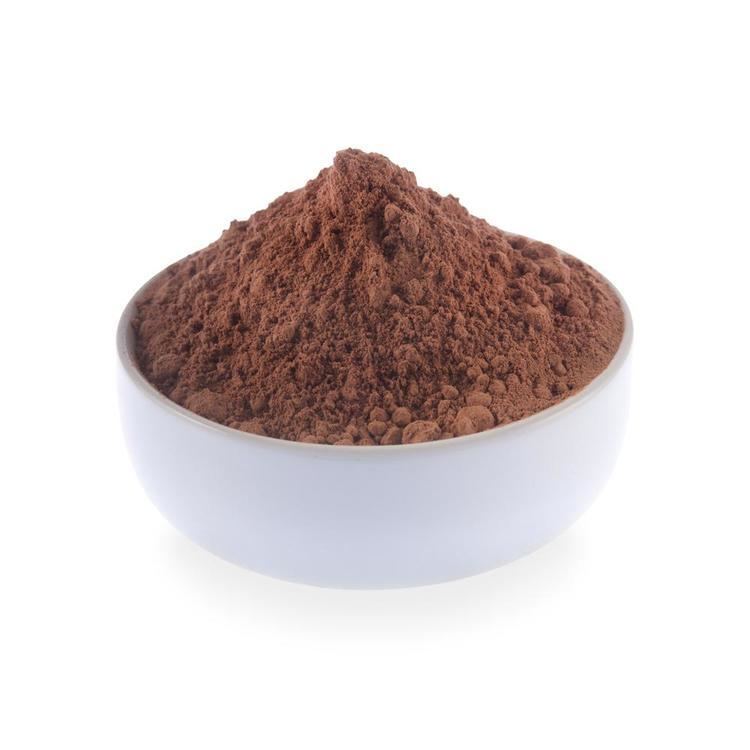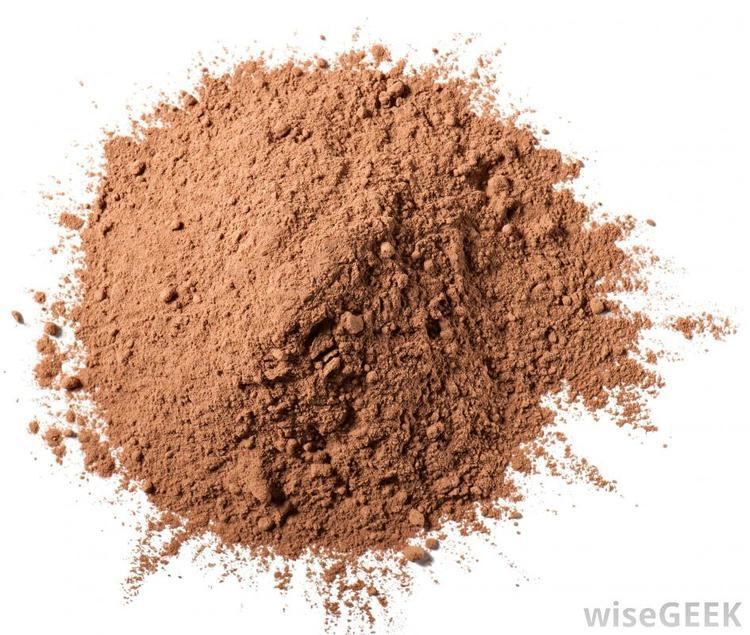Energy 954 kJ (228 kcal) Fat 13.70 g Calcium (13%)128 mg | Carbohydrates 57.90 g Protein 19.60 g Iron (107%)13.86 mg | |
 | ||
Similar Cocoa bean, Chocolate, Vanilla, Hot chocolate, Flour | ||
Cocoa solids are a mixture of many substances remaining after cocoa butter is extracted from cacao beans. When sold as an end product, it may also be called cocoa powder or cocoa. In contrast, the fatty component of chocolate is cocoa butter. Cocoa butter is 50% to 57% of the weight of cocoa beans and gives chocolate its characteristic melting properties. Cocoa liquor or cocoa mass is a paste of roasted cocoa beans with cocoa butter and solids in their natural proportions. Chocolate requires the addition of extra cocoa butter to cocoa liquor, leading to an excess of cocoa solids and thus a relatively cheap supply of cocoa powder. This contrasts with the earliest European usage of cocoa where, before milk and dark chocolate was popularized, cocoa powder was the primary product and cocoa butter was little more than a waste product.
Contents

Cocoa solids are one of the richest sources of flavanol antioxidants. They are a key ingredient of chocolate, chocolate syrup, and chocolate confections.
Grow chocolate indoors from a seed
Physical properties
Natural cocoa powder has a light brown color and an extractable pH of 5.3 to 5.8. The processed (alkalized) cocoa powder is darker in color, ranging from brownish red to nearly black, with a pH from 6.8 to 8.1. The alkalization process reduces bitterness and improves solubility, which is important for beverage product applications. All of these pH values are considered safe for food use.
Nutrition
Cocoa powder contains several minerals including calcium, copper, magnesium, phosphorus, potassium, sodium and zinc. All of these minerals are found in greater quantities in cocoa powder than either cocoa butter or cocoa liquor. Cocoa solids also contain 230 mg of caffeine and 2057 mg of theobromine per 100g, which are mostly absent from the other components of the cocoa bean. Cocoa solids also contain clovamide (N-caffeoyl-L-DOPA).
Flavonoids
Cocoa powder is rich in flavonoids, a type of phenolic acid. The amount of flavonoids depends on the amount of processing and manufacturing the cocoa powder undergoes, but cocoa powder can contain up to 10% of its weight in flavonoids. However, its alkalization, also known as Dutch processing, causes its content of flavonoids to be substantially reduced.
Safety
Cocoa and cacao powders may contain cadmium, a toxic heavy metal and probable carcinogen. From January 1 2019, the European Union will impose a limit for cadmium in cocoa powders of 0.6 µg per gram of cocoa powder, and 0.8 µg per gram for chocolate with >= 50% total dry cocoa solids. In Canada, a daily serving of a natural health product must contain no more than 6 µg of cadmium for an individual weighing 150 pounds (68 kg) and 3 µg for a 75 lb (34 kg) individual. While the U.S. government has not set a limit for cadmium in foods or health products, the state of California has established a maximum allowable daily level of oral cadmium exposure of 4.1 µg, and requires products containing more than this amount per daily serving to bear a warning on the label. One investigation by an independent consumer testing laboratory found that seven of nine commercially available cocoa powders and nibs selected for testing contained more than 0.3 µg of cadmium per serving gram; five of these products exceeded the proposed EU limit of 0.6 µg per gram.
